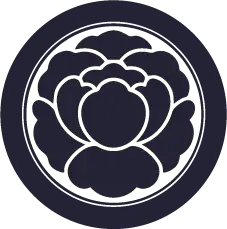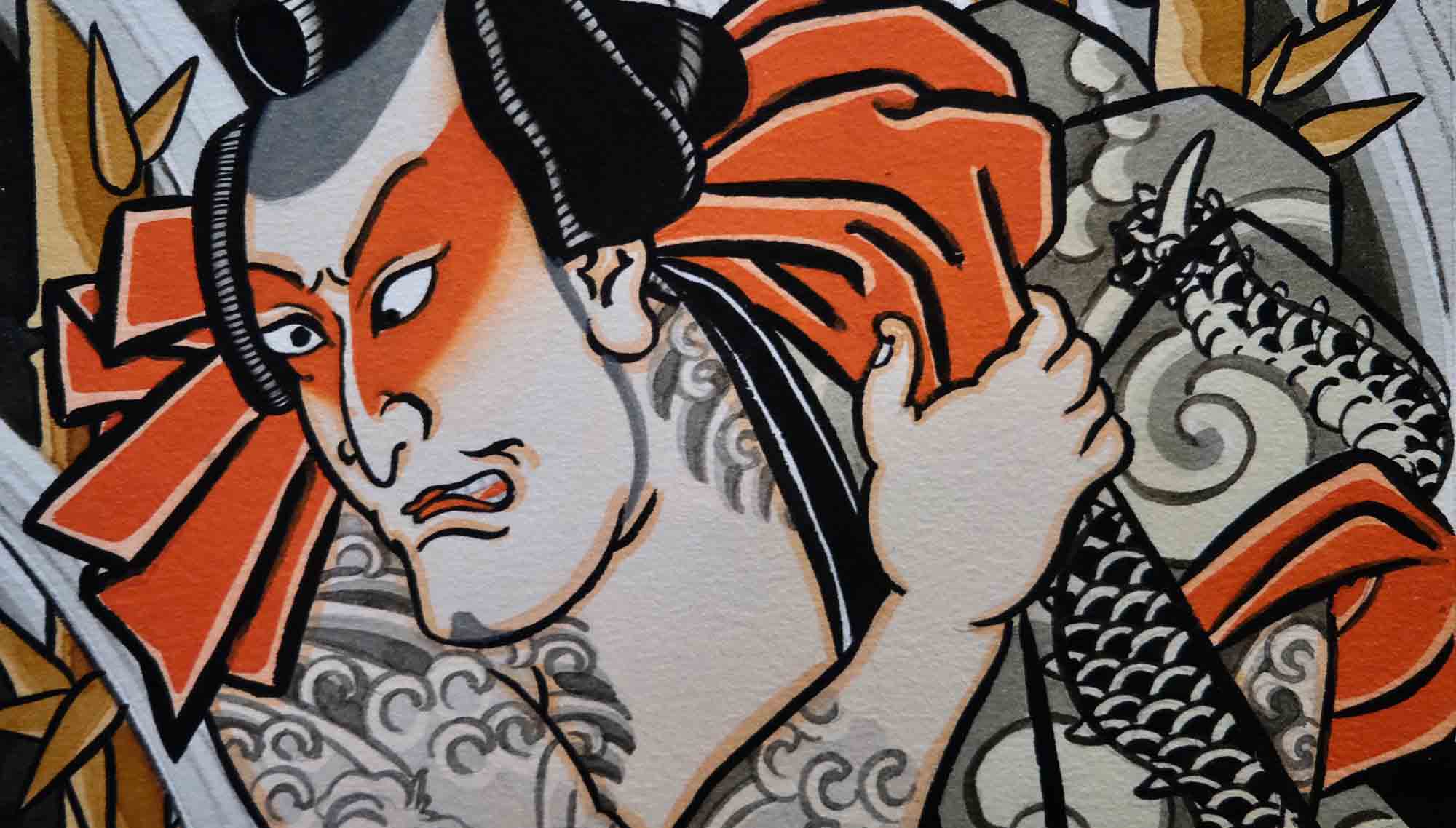
Ever heard of the Chinese Shuihu Zhuan? For most people, it probably sounds like the menu of their favourite Asian restaurant. However, few people know that these are Chinese Robin Hoods. They are the model for the Japanese Suikoden of the 18th century.
If you’re excited about the topic, enjoy our high-quality Japanese prints in the meantime! You can find this traditional “Kabuki actor” print and other motifs in our online shop.
Shuihu Zhuan – more than just a fairy tale
The Shuihu Zhuan is a collection of Chinese tales. They tell about events that have taken place in the Northern Song Dynasty (960-1125). 108 Chinese rebels, under the command of Song Jiang, revolted against a corrupt and unjust regime. The rebels left their normal lives behind and sought refuge with the brigands in the mountains near Liangshan Marsh.
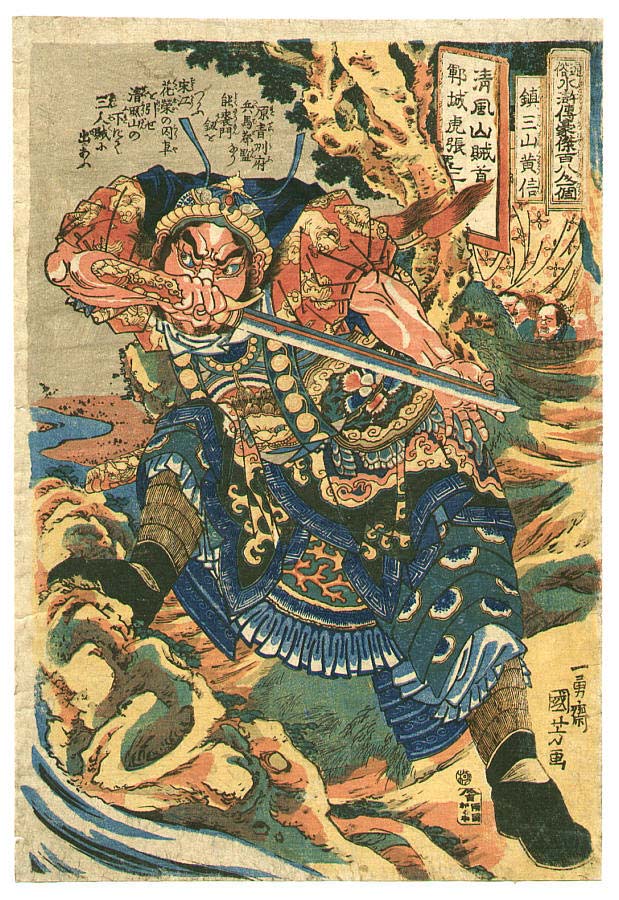

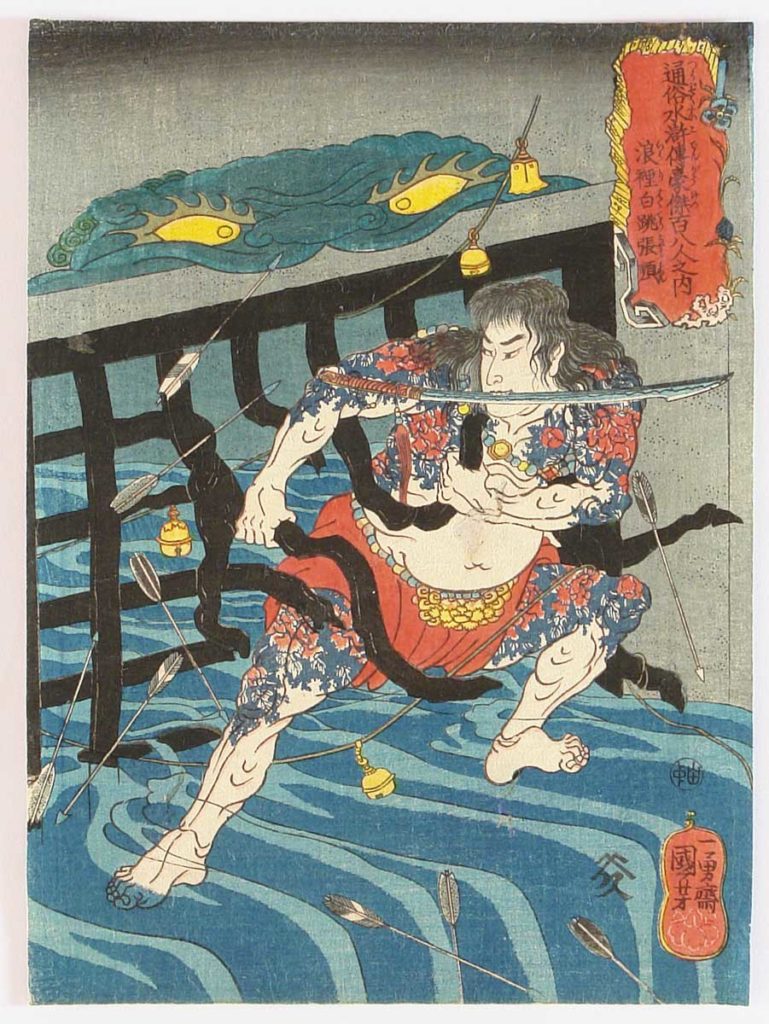
Robin Hood
As we know from the story of Robin Hood, the robbers in their community followed a strict code of honor. Honor, loyalty and a sense of justice drove men and women to action. They actively worked against the injustice of the Chinese regime and helped friends in difficult situations. To achieve their goals, they also never shied away from using violence.
Centuries later, this would inspire Japanese artists, such as Hokusai and Kunoyoshi, to bring to life impressive woodblock prints depicting their adventures.
Stars of heaven
The novella consists of about 70 chapters. The first 30 chapters introduce the individual characters who are hiding from the government in Liangshan. Later follows a description of the deeds and the coming together of the whole group, which is constantly growing. The original edition ends with the appearance of a stone tablet. The stone lists the names of the 108 rebels as a heavenly message. The Chinese Shuihu Zhuan divides into 36 leaders and 72 subordinates, showing on the front the names of the leaders as “Stars of Heaven”. While the “Stars of Earth”, the subordinates appear on the back of the stone tablet.


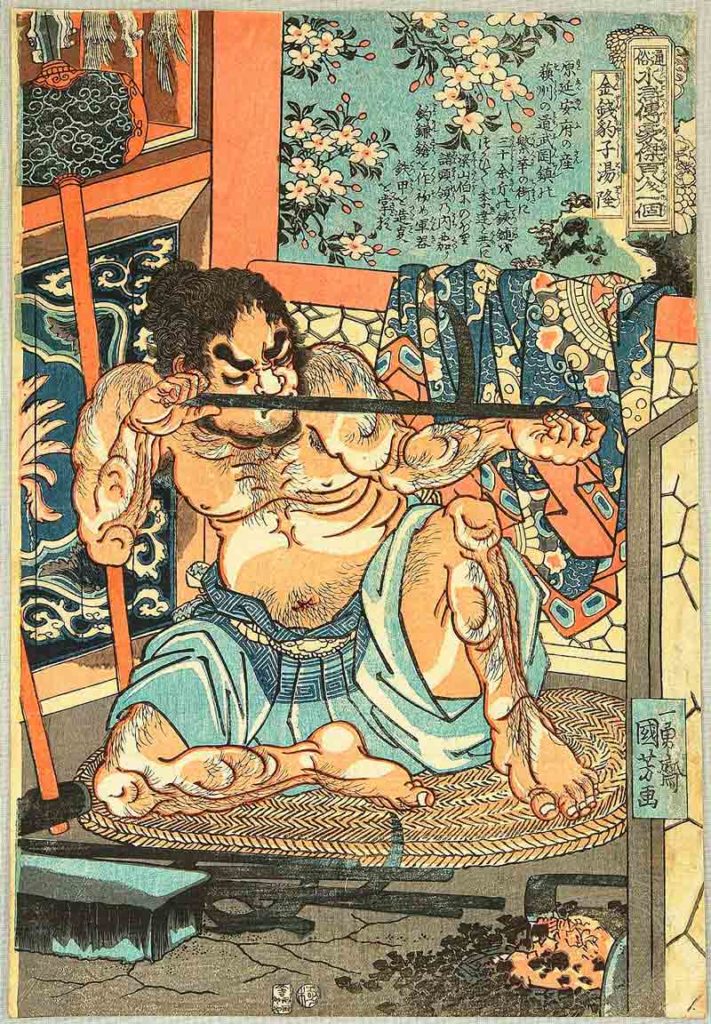
The Moral Death of Song Jiang
As it always happens with orally transmitted fairy tales, over time they develop and change. In order to generate more sales, starting from the 16th century, book sellers greatly started adapting these stories. For example, they expanded the “short” 70 chapter version to a longer versions with up to 120 chapters. The newer versions included Song Jiang’s desire to join military forces and fight robbers and criminal gangs himself. These novellas, unlike the original, end with his and his fellow soldiers death. This adaptation lends a certain morality to the ending, as no crime should go unpunished.
How Shuihu Zhuan became the Suikoden
In the 18th century, the demand for literature increased in Japan, as it was now accessible to everyone. During this period, Japanese scholars studied the Chinese language to expand their literary knowledge. It is therefore not surprising that Shuihu Zhuan also fell into their hands. Okajima Kanzan translated, simplified and published the story around 1727, with about 100 chapters. The Chinese Shuihu Zhuan thus became the “Suikoden – Stories of the Water Margin”.
The detailed stories of the Suikoden were perfect for woodblock prints. Inspired by these, Bakin, the most popular yomihon author, and Hokusai, an illustrator, joined forces. Around 1838, they published the “Shinpen Suikogaden”. 1827 – 1830 the artist Kuniyoshi published a series of woodblock prints on the same theme, called “Suikoden”. Who inspired whom is still unclear. However, the Suikoden brought the hitherto little successful Kuniyoshi his long-awaited and deserved success.
and what if he didn’t die…
It is typical for Chinese novellas to have an open end, so that the readers stay on the ball. We will as well not reveal the ending of the story. We will only tell you how the Japanese “Irezumi” from being forced tattoos developed to amazing full body tattoo projects.
This way you will look forward to the next series about the “Seven lucky Gods“.
If you want to go deeper into the subject or if you would like to start a tattoo project, contact us via our contact form.

